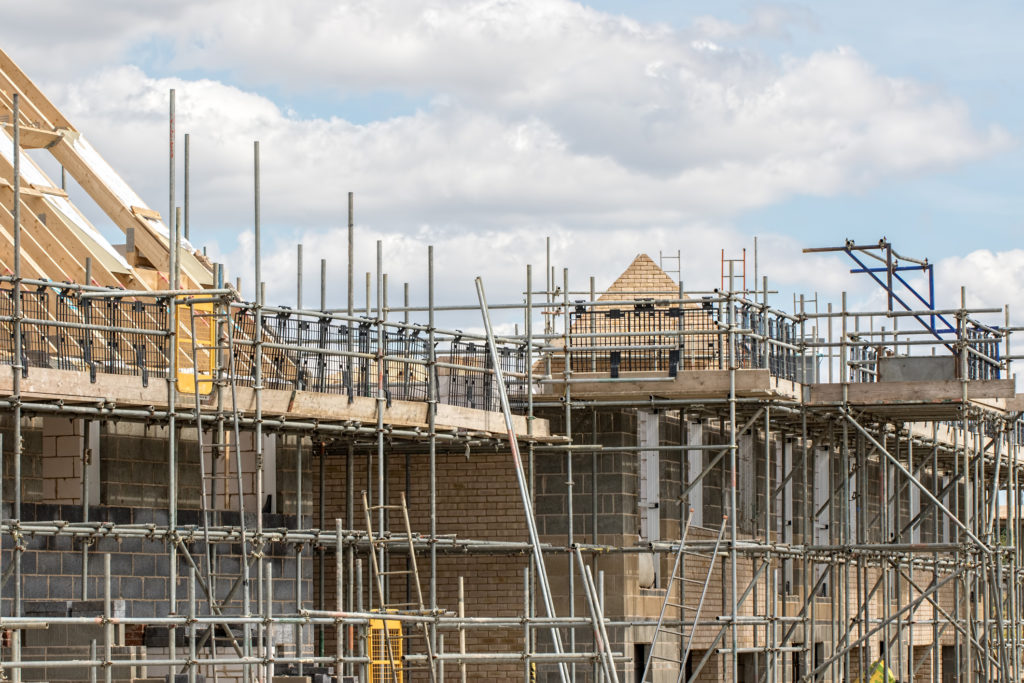News & Resources

Updated Building Regulations have been made from June 15th 2022, to improve overall energy efficiency. With these major changes, here’s what architects need to know and how it will affect current and future projects… The updated regulations include: Amendments to Approved Documents Part F (Ventilation) and Part L (Conservation of fuel and power). There has also been a new release Approved Document for Overheating (Part O). These regulations are primary focused on non-domestic buildings, but these also include policies for … Continue reading

Energy Performance certificate rules are changing in April of this year, are you ready for these changes? As of April 2023, all leased commercial buildings require an EPC, in compliance with UK law. Therefore, commercial landlords need to make sure they are ready for these changes and are prepared to improve their EPC rating if necessary. What is an EPC? An EPC stands for Energy Performance Certificate. It is a document which evaluates the energy efficiency of a property, and … Continue reading

Would you like to join an enthusiastic growing company in a small, friendly working environment? We deliver high quality energy efficiency and sustainability advice and assessments, aiming to reduce energy usage in new build and commercial properties. Due to expansion, we require an additional surveyor to produce commercial EPCs and SBEM calcs from our Lyndhurst office. This Assessor position is full time, Monday to Friday 38 hours per week. We offer a competitive package including 25 days annual leave, pension, … Continue reading

The Future Homes Standard has been highly publicised within the construction industry. As such there has been much focus on the future date of 2025 when the FHS is due to come into force, bringing with it the requirement of a 75-80% reduction in CO2 over current Building Regulation levels. However, more pertinent and, indeed more pressing, is the Interim Update of the Building Regulations due to come into force in June 2022. Yes. NEXT YEAR! To date, we have … Continue reading

After many delays and false starts, the government finally set out its plan to decarbonise our homes and buildings this October and meet its commitments to Net Zero 2050. The plan takes the form of the Heat and Buildings Strategy and aims to provide a clear direction of travel towards decarbonising the 30 million buildings we have here in the UK that contribute to almost a quarter of all UK emissions. It is also hoped that this strategy will help … Continue reading

The government has launched a raft of updates and proposed updates to the energy efficiency requirements for buildings over the past few months. From a long-awaited update to Part L – the conservation of fuel and power section of the building regulations, to a broader insight into Part L and Part F Ventilation, from 2025 and beyond. It has also introduced a new document to address the newly identified risk of Overheating. The changes are long overdue with the current … Continue reading

The current UK housing stock is generally older than in the rest of Europe, and the potential for improvement in energy efficiency is considerable. So it’s understandable that this is a key focus for the government in achieving their ambitious Net Zero 2050 targets. Private Rented Sector Consultation Privately Rented Homes make up 20% of all UK housing. From September 2020 to January 2021, the government ran a consultation seeking views on improving energy performance standards for the domestic private … Continue reading

Good news for 2021. The Ministry of Housing, Communities and Local Government (MCLG) has announced game-changer updates to Part L and F New Homes Mandate as a first step towards the Future Homes Standard. Effective this year, it means not only significant, but imminent changes to the energy efficiency of new home design and build. A relief for eco-focused architects, designers, builders and planners and great news for the energy efficiency of future homes; this interim uplift is long-awaited (energy … Continue reading

Just 18 months in, the Government is consulting on how to improve the Minimum Energy Efficiency Standards (MEES) for commercial buildings as part of the ongoing CO2 reduction commitments and net-zero by 2050 commitment, a legally binding policy set in legislation earlier this year. MEES currently requires a minimum EPC rating of E in order for the building to be rented (some exceptions apply) and came into force in April 2018. The new consultation consists of two proposed options to … Continue reading

Is the Future Homes Standard Consultation the step change in energy efficiency that the new build housing market has required since the back down on Zero Carbon Homes? On the 1st October, the Government launched The Future Homes Standard Consultation, a new consultation that is intended to future-proof energy efficiency standards for new build housing from 2020 through to 2025 and beyond to Net Zero Emissions 2050. The consultation sets out Government plans for the Future Homes Standard, which proposes … Continue reading

What is a SAP Calculation? The method of assessing if a dwelling meets the requirements of Part L1A/B of the building regulations 2013. SAP is the energy model used to calculate the overall energy efficiency and the fabric efficiency of a dwelling. A SAP calculation is required For all new residential Dwellings, conversions and for some extensions usually one which have large amounts of glazing. Building Control or your approved inspector will usually require the SAP calculation prior to start … Continue reading

The next stage of the Housing Supplementary Planning Guidance – Standard 35 – Zero Carbon Homes comes into force from the 1st October 2016 as set out in the Mayor’s Sustainable Design and Construction SPG 2014. In contrast to the Governments recent decision to shelve the Zero Carbon Homes Policy (as reported earlier) and the Governments guidance that local planning Authorities should not set energy standard requirements above those set out in the Code for Sustainable Homes Level 4. The … Continue reading

The government has succeeded in scrapping the Zero Carbon Homes policy, despite opposition in the House of Lords. Last week we reported on the attempt by the lords to reinstate some of the zero carbon homes measures in an amendment to the housing and planning bill. This sparked additional debate in parliament. However, on 11 May 2016 the government defeated the amendment in the lords, by a margin of just four votes. The bill is now being passed into law. In … Continue reading

Airtight new homes creating serious health problems – Evidence of poor ventilation in 200-home study
High levels of airtightness and poor ventilation are building up major health problems in new housing, according to a study by Glasgow School of Art’s Mackintosh Environmental Architecture Research Unit (Mearu). Researchers uncovered serious indoor air quality (IAQ) problems in a wide range of new homes that had been built to be ‘airtight’ and, as a result, were increasing instances of asthma and other respiratory problems in occupants. Mearu studied 200 modern homes and found ‘widespread evidence of poor ventilation, with … Continue reading

The Government’s efforts to scale-back on key green policies has been blocked, after the House of Lords voted to reintroduce on-site carbon compliance standards for homes and extend the grace period criteria for onshore wind farm subsidies. The Treasury announced last summer it would be scrapping regulations on house building including a planned increase in on-site energy efficiency standards in order to streamline development. The Government was defeated in a House of Lords vote on the zero-carbon homes amendment yesterday … Continue reading

FROM 1ST APRIL 2018 PRIVATE NON DOMESTIC (AND DOMESTIC) LANDLORDS IN ENGLAND AND WALES LETTING OR RENEWING LEASES WILL NEED TO ENSURE THAT THEIR PROPERTIES REACH AT LEAST AN ‘E’ RATED EPC UNLESS CERTAIN EXEMPTIONS APPLY. As highly experienced SBEM assessors using Designbuilder, Energy Report can model your building or portfolio and advise on areas of potential non-compliance. We can model multiple potential improvements if necessary to find the most cost effective solution if any are Band ‘F’ or ‘G’ as well … Continue reading








 Energy report offers an efficient service which really helps when dealing with planning conditions and building regulations. They have a fast turnaround time at the end of projects with air tests, which helps when producing the final EPC results for sales purposes.
Energy report offers an efficient service which really helps when dealing with planning conditions and building regulations. They have a fast turnaround time at the end of projects with air tests, which helps when producing the final EPC results for sales purposes.